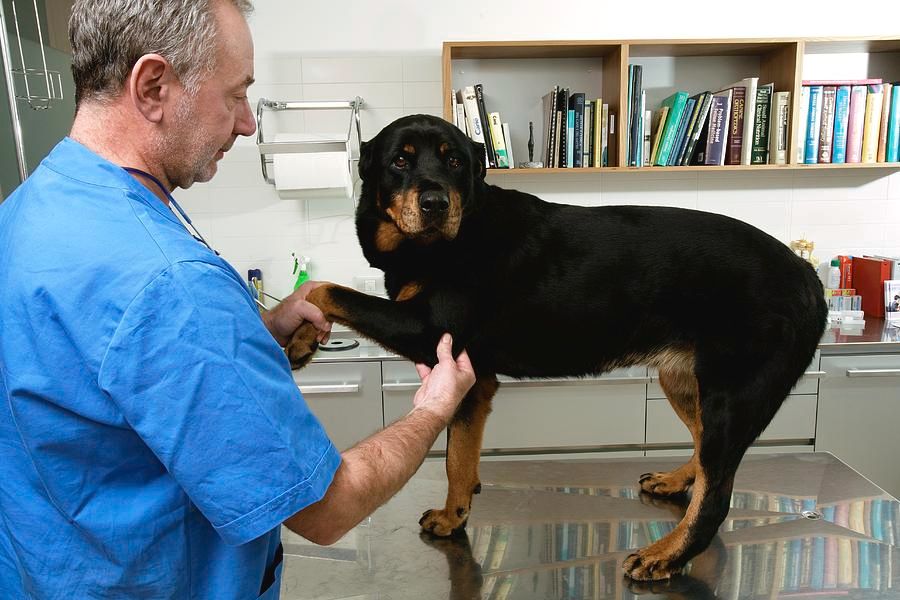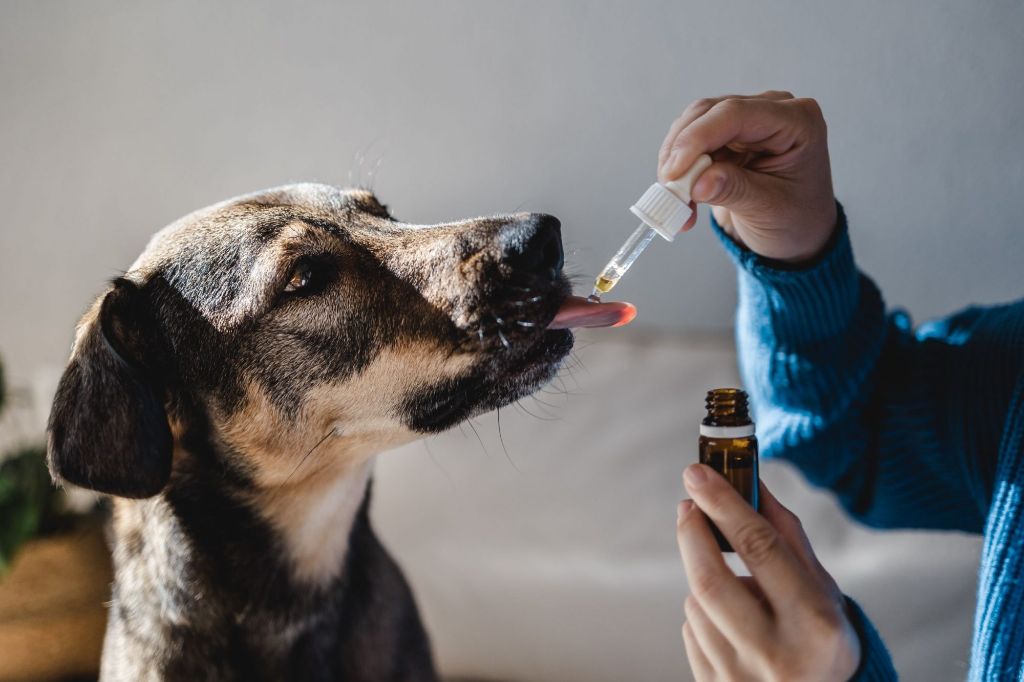Introduction
It can be concerning when your dog starts limping or holding up their paw for no apparent reason. Limping in dogs has many potential causes, ranging from minor injuries to more serious conditions. Some of the most common reasons a dog may limp for 3 days include injuries or trauma, arthritis, infection, or bone cancer. While the limping may resolve on its own, it’s important to identify the root cause so you can get your dog proper treatment if needed.
In this article, we will explore the main reasons why your dog may have been limping for the past 3 days, when you should seek veterinary care, and how to provide at-home care to help your dog heal. With some observation, diagnosis, and the right care plan, we can get your canine companion back to their normal, energetic selves.
Observe Your Dog’s Behavior
The first step in dealing with a limp is to closely observe your dog’s behavior for signs of pain or discomfort. Look for visible grimacing, whining or crying out, changes in appetite, reluctance to move or play, aggression when touched, or other behavioral shifts [1]. Pay attention to see if the limp is consistent or comes and goes. A limp that improves with rest but worsens with activity may indicate a muscular or joint issue. Monitor whether the limp gets better or worse over the course of days. Keeping detailed notes and video can help your vet diagnose the cause [2]. Also note if your dog is limping on one or multiple legs.

Common Causes of Limping
There are several common causes for why your dog may start limping, including injuries, arthritis, and diseases.
Injuries to your dog’s paws, legs, hips, or spine can result in limping. These injuries may include strains, sprains, fractures, dislocations, or trauma from things like falls or accidents. Damage to tendons, ligaments, muscles, bones, joints, or nerves can all potentially lead to limping.
Arthritis is another frequent cause of limping in dogs, especially as they age. Arthritis causes inflammation, stiffness, and pain in the joints, making movement difficult. It often affects the hips or elbows first. https://www.petmd.com/dog/wellness/evr_dg_the_facts_about_arthritis_in_dogs
Certain diseases may also result in limping. Lyme disease, caused by bacteria transmitted through tick bites, can cause limping if it infects your dog’s joints. Legg-Calve-Perthes disease affects the hip joints in young dogs, leading to degeneration and eventual limping.
No matter the underlying cause, limping indicates your dog is experiencing pain or discomfort while walking. Getting a veterinary examination can help determine the exact reason for the limping and best treatment options.
Have Your Vet Examine Your Dog
If your dog’s limping persists for more than a day or two, it’s a good idea to have your vet take a look. The vet will do a physical exam and manipulate your dog’s joints and limbs in order to pinpoint where the pain is coming from. Areas of swelling or sensitivity may indicate issues like arthritis, ligament tears, fractures, or muscle strains.

To get to the root of the problem, the vet may suggest diagnostic tests like x-rays, MRI, CT scan, or bloodwork. These can help rule out or confirm conditions like bone cancer, Lyme disease, elbow or hip dysplasia, and more. The vet may also analyze the joint fluid to check for signs of inflammation or infection.
Once the vet determines the cause of limping, they will recommend the appropriate treatment plan. This may involve medication, joint supplements, rest and restricted activity, physical therapy, or even surgery in some cases. Early diagnosis and treatment can help get your dog back on all four paws as quickly as possible.
Source: https://www.matthews.carolinavet.com/site/pet-health-blog/2021/03/30/dog-limping
Treatments for Limping
If your dog is limping, there are several treatment options that your vet may recommend depending on the cause and severity of the limping:
Rest and Restrict Activity
Allowing your dog ample time to rest is crucial for recovery from limping or lameness. Restrict your dog’s activity by keeping them confined, using baby gates or crates, and going on short, gentle leash walks for potty breaks only. Avoiding too much activity will prevent further injury and inflammation (Source).
Physical Therapy
Your vet may prescribe physical therapy with a canine therapist to help rebuild muscle strength, increase flexibility and range of motion, and improve balance. Common physical therapy techniques include massage, passive range of motion exercises, hydrotherapy, and more (Source).
Pain Medications
Medications like NSAIDs and joint supplements can help manage pain and inflammation associated with limping. Your vet will prescribe appropriate medications based on your dog’s health profile. Only give your dog OTC pain meds under your vet’s guidance (Source).

Treat Underlying Condition
If a specific condition causing the limping is diagnosed, your vet will outline the appropriate treatment plan. This may include medications, surgery, or specific therapies tailored to the underlying issue.
Recovery Timeline
The recovery timeline for a limping dog can vary greatly depending on the underlying cause. Here’s what to expect:
-
For mild injuries like strains, sprains, or bruises, your dog may recover within a few days with rest and restricted activity. Applying ice packs and giving pain medication can help speed healing.
-
For more significant injuries like fractures or torn ligaments, recovery can take 4-6 weeks with veterinary treatment like splinting and physical therapy. Your dog will need to limit activity during this time.
-
Arthritis is a chronic condition, so limping due to arthritis may persist long-term. But medications, supplements, weight loss, exercise moderation, and physical therapy can all help improve mobility and reduce limping over 4-6 weeks.
-
For unknown limping causes, you may need to give veterinary treatments 2-4 weeks to work before reassessing your dog’s condition if limping persists.
In all cases, be patient during recovery. Don’t push your dog with too much activity too soon. Work closely with your veterinarian to ensure treatments are helping and make adjustments as needed.
Preventing Limping
There are several steps you can take to help prevent your dog from limping:
- Proper exercise and weight control – Keeping your dog at a healthy weight reduces stress on the joints. Provide daily exercise tailored to your dog’s age and breed to strengthen muscles and improve mobility.
- Joint supplements – Glucosamine, chondroitin, and omega-3 fatty acid supplements can help maintain joint health and prevent injuries in some dogs, according to the AKC (source).
- Avoid overexertion – Don’t overexercise a puppy or older dog. Gradually build up the intensity and duration of exercise to avoid sprains and fractures.
- Promptly treat injuries – Rest, ice, compression, and elevation can minimize swelling. Seek veterinary care for fractures, dislocations, cruciate ligament tears, and other significant injuries.
Implementing preventative measures reduces your dog’s chances of developing injuries and osteoarthritis that can lead to limping. However, some congenital and acquired conditions cannot be entirely prevented through lifestyle changes alone.
When to Seek Emergency Care
In most cases, limping in dogs can be treated at home with rest and TLC. However, there are a few signs that indicate an emergency trip to the vet is needed:
Unwilling to Put Weight on Leg: If your dog is refusing to put any weight on their affected leg, this can indicate a severe injury like a muscle tear or a fracture. You should seek emergency care if your dog is holding their leg up and unable to place it on the ground when standing or walking. This level of pain means a serious injury likely needs immediate attention by a vet (1).
Visible Fracture: If you can see an obvious deformity, swelling, or protruding bone, your dog may have a fracture that requires emergency veterinary care. Stabilizing the fractured bone quickly is imperative (2).
Loss of Circulation to Limb: Signs like pale gums or coldness in the limping leg can mean restricted blood flow, which requires prompt emergency care. Prolonged loss of circulation can lead to tissue damage (3).
Crystals in Urine: In some cases, limping is caused by bladder stones or crystals that irritate the bladder and cause referred pain in the hind legs. Straining or blood in the urine along with limping needs an urgent vet visit as stones can quickly obstruct the urethra (1).
In addition to the above signs, seek immediate veterinary care if the limping is accompanied by a loss of appetite, vomiting, high fever, or lethargy. Your vet can pinpoint the underlying cause and begin appropriate treatment right away when time is critical.
Sources:
(1) https://emergencyvethosp.com/when-to-see-an-emergency-vet-for-your-dogs-limping/
(2) https://www.matthews.carolinavet.com/site/pet-health-blog/2021/03/30/dog-limping
(3) https://www.dockerymobleyvets.com/site/blog/2022/03/24/dog-limping
Providing At-Home Care
There are several things you can do at home to help care for your limping dog and support their recovery:
Massage – Gently massaging the injured leg can help improve blood flow and reduce swelling and stiffness. Focus on massaging the muscle areas around the joint or injury site using light, circular motions. Do this for 5-10 minutes a few times per day. Ice or heat therapy may help relax the muscles before massage.

Ice/heat therapy – Applying an ice pack wrapped in a towel to the affected area for 10-15 minutes can help reduce inflammation and pain. Use ice therapy for the first 48 hours after onset of limping or after strenuous activity. After 48 hours, switch to applying a warm compress to the area which can improve blood flow. Take care not to burn the skin with ice or heat.
Assist standing/walking – Use a sling, towel, or mobility harness to help support your dog’s weight when standing up or walking on the injured leg. This reduces strain on the injury. Go slow and steady, allowing them to put weight on the leg at their own pace.
Keeping dog calm and confined – Restrict activity and have your dog rest as much as possible. Confine them to a small space like a crate or pen to limit movement. This allows the injury time to heal without risk of further damage from too much activity. Provide interactive toys to prevent boredom.
Summary
In summary, if your dog has been limping for several days, it’s important to identify and treat the underlying cause. Limping can result from injuries, arthritis, neurological issues, or other conditions. Observe your dog’s behavior and have your vet thoroughly examine them to pinpoint the reason for limping.
With proper treatment, care, and rest, limping often resolves on its own. However, certain causes like fractures or ligament tears may require surgery and immobilization to heal. Providing at-home care like restricting activity, massages, cold compresses, joint supplements, and pain medication can bring relief while recovering. Monitor your dog’s limping daily and avoid overexertion during this time.
The key points are determining the cause of limping through veterinary exams, initiating appropriate treatment, giving your dog adequate rest and recovery time, and providing at-home care to ease discomfort. Addressing limping quickly improves outcomes and prevents minor issues from worsening over time. With patience and proper care, your dog can make a full recovery.